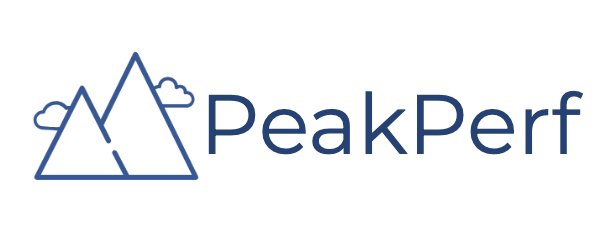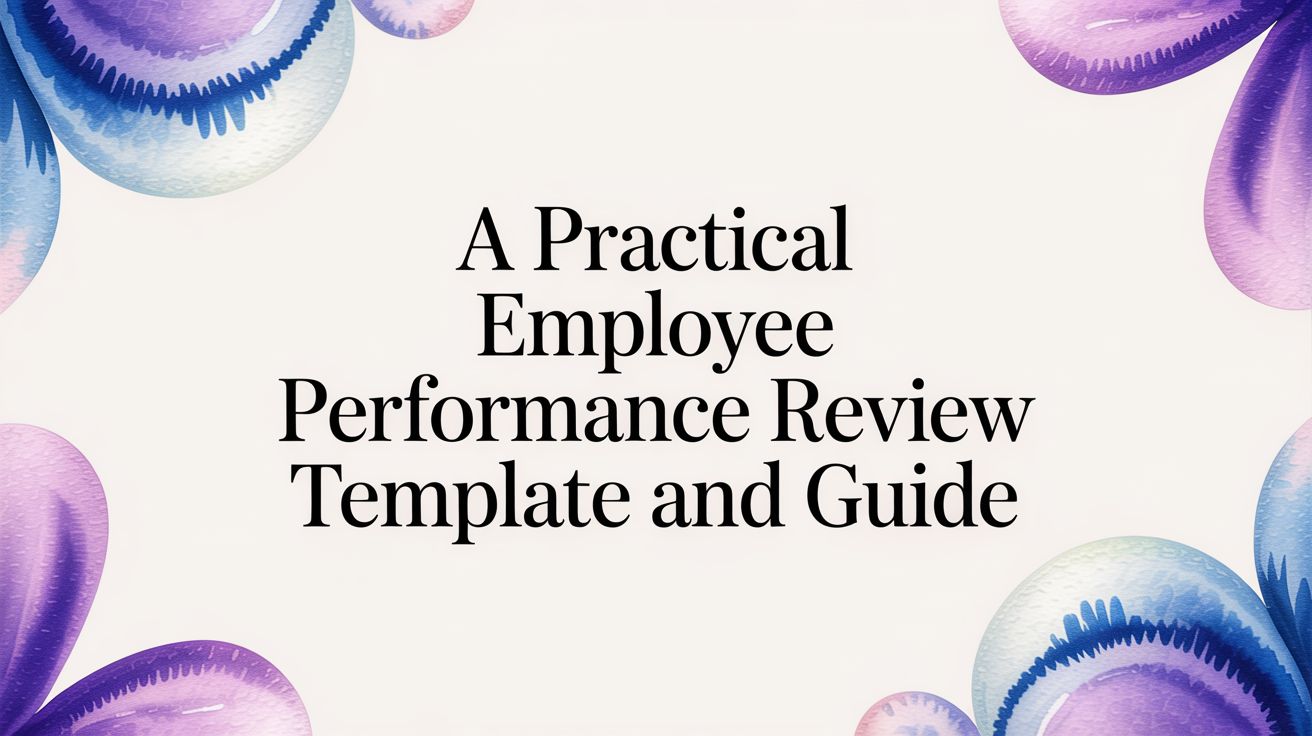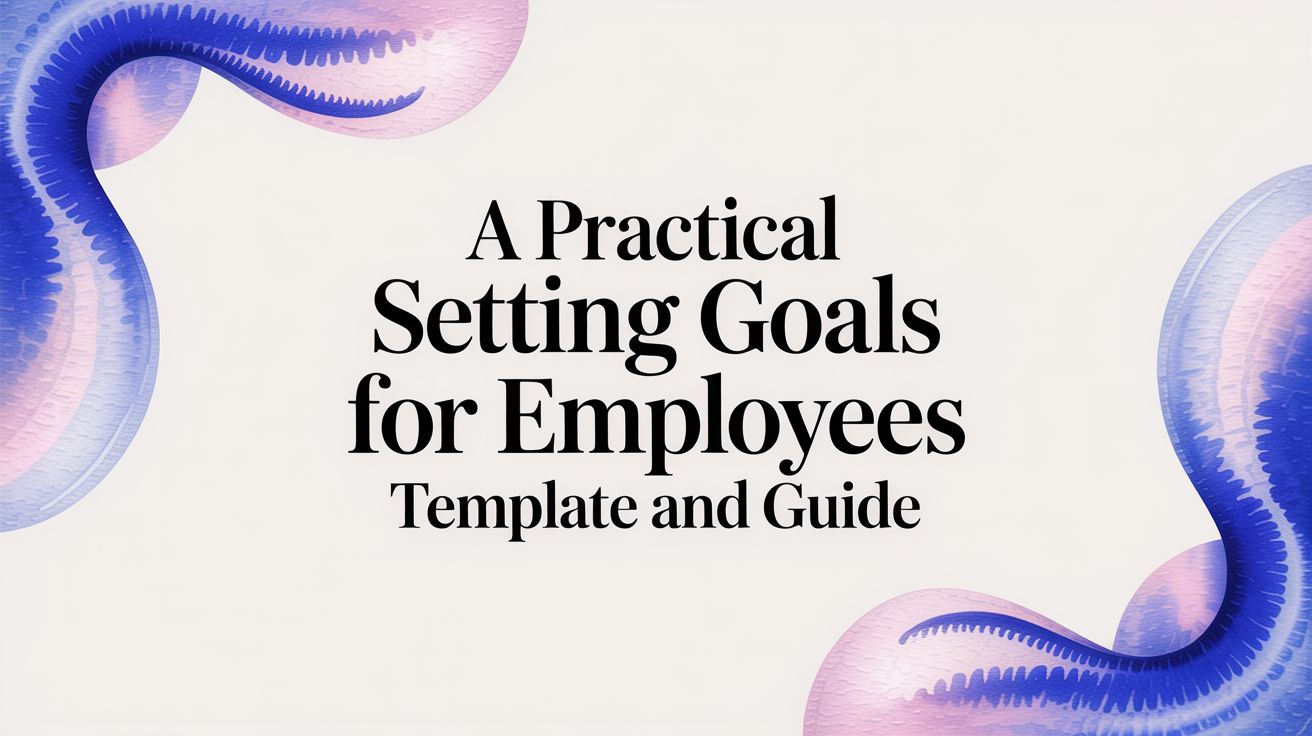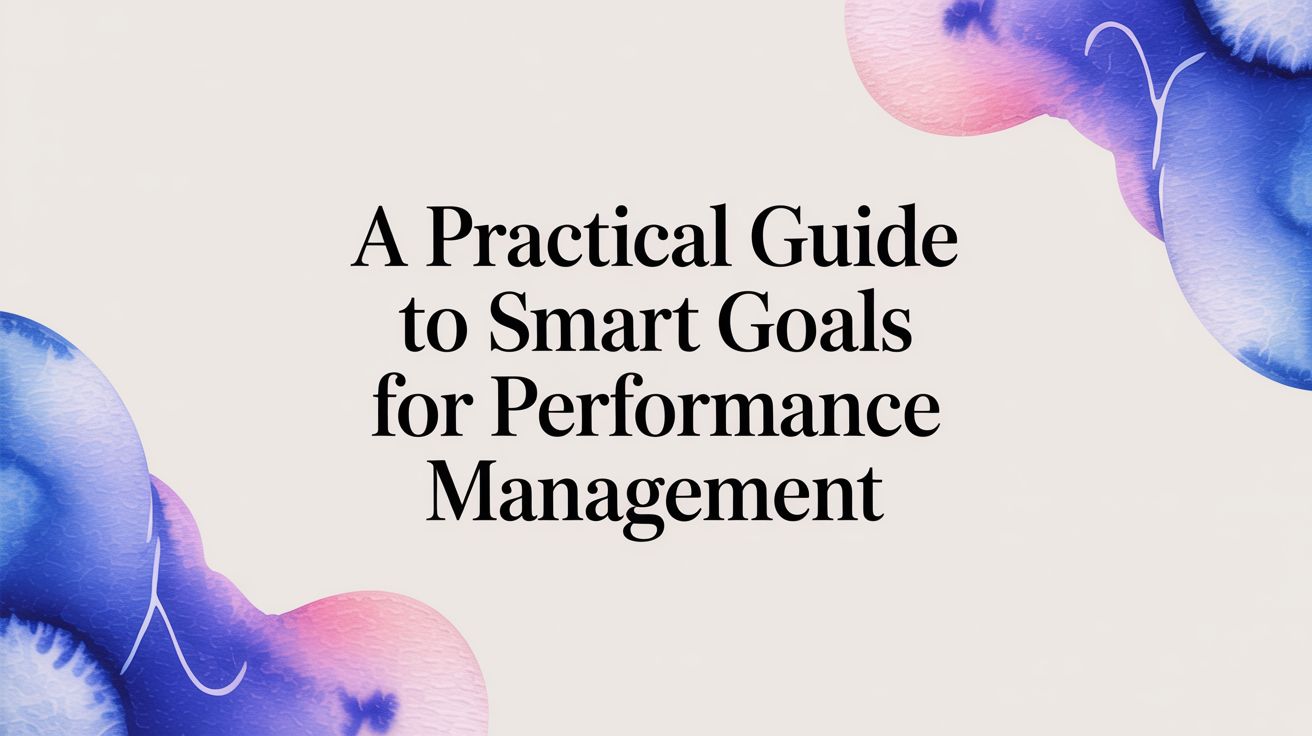Performance Management Training for Managers: A Practical Guide
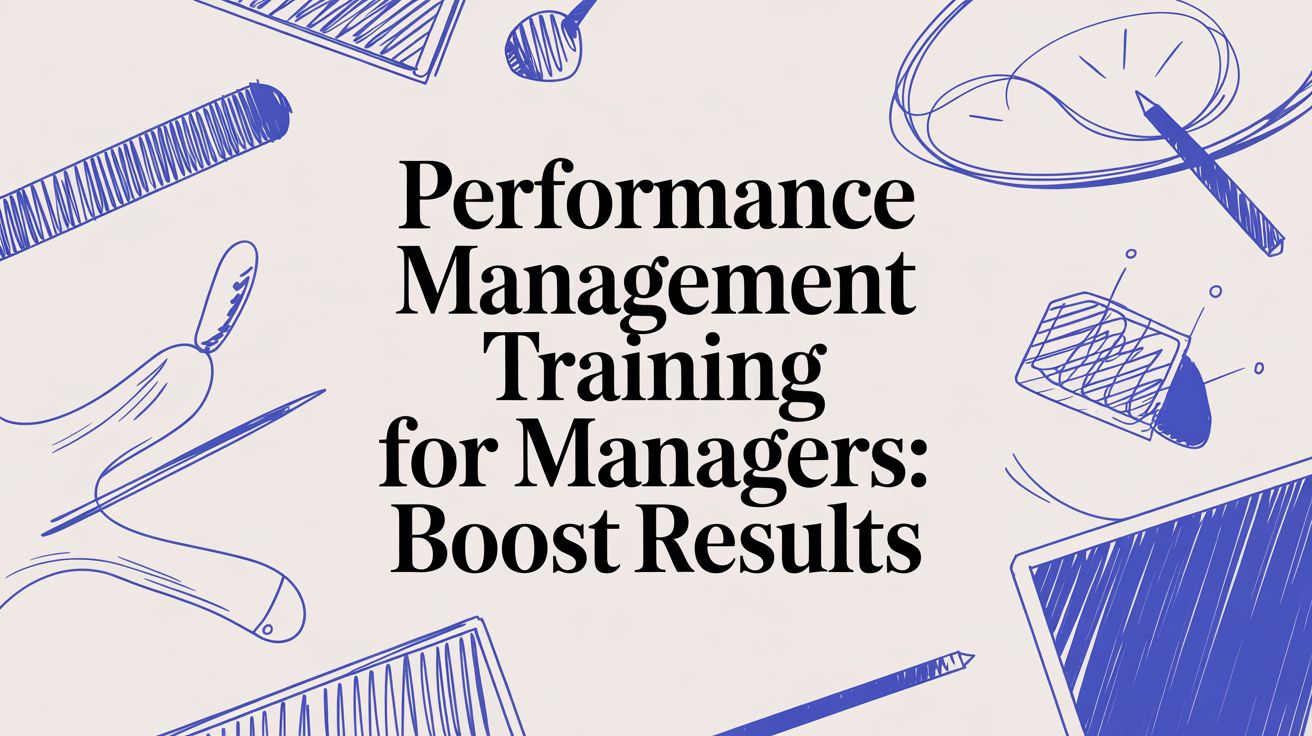
Effective performance management training equips your leaders to lead. It helps them foster growth, give feedback that works, and align everyone toward common goals. This guide moves beyond the annual review to help you build a culture of continuous development and ownership.
Why Traditional Performance Reviews Fail
Many organizations use the annual performance review. This practice often causes more harm than good. A once-a-year event is disconnected from daily work.
Managers and direct reports must recall wins and challenges from months ago. This leads to a skewed and incomplete picture of performance.
This system creates recency bias. A significant win or failure in the month before the review can overshadow eleven months of consistent work. The evaluation becomes a small snapshot, not the full story. This process leaves people feeling misunderstood and undervalued.
The High Cost of Inaccurate Feedback
When performance management is a bureaucratic task, it has already failed. Managers rush through forms. Employees receive vague, unhelpful feedback with no clarity on how to improve. This approach kills morale and erodes trust.
This process does not identify and develop rising stars or address underperformance. The entire exercise wastes time.
Data supports this. A reported 95% of managers are unhappy with their company's performance management process. Also, 90% of HR leaders admit these reviews fail to produce an accurate picture of employee performance. The numbers show a need for change.
The core problem with outdated reviews is they look backward instead of forward. A great performance management system should be a tool for growth and motivation, not a source of anxiety and frustration.
Shifting Toward a Better Model
Acknowledging these failures is the first step to building a better system. An effective process is continuous, not annual. It builds on regular check-ins, timely feedback, and collaborative goal-setting.
This approach transforms performance discussions from formal judgments into productive coaching conversations.
By replacing the single yearly event, you create a dynamic environment. Employees feel supported. Managers are empowered to be great coaches. You can find more modern approaches in our guide to performance management best practices.
This model requires a different set of skills. This is why targeted performance management training for managers is so important. It gives your leaders the practical tools they need to support their teams. The rest of this guide shows you how to build that training.
Building Your Core Manager Training Modules
A solid performance management training program is built on a structured curriculum. The goal is to give every leader the same core skills. This creates a unified and fair approach to team development across the company. When managers are on the same page, they act with more confidence in any situation.
Instead of one long training day, break the content into focused modules. This approach makes information easier for busy managers to digest and apply. Each module should focus on a specific managerial skill, ensuring your leaders walk away with practical tools they can use immediately.
The infographic below shows why this shift is important. It shows the cycle that outdated annual reviews create.
Infrequent reviews often lead to inaccurate assessments and lower team morale. We need to move toward a model of continuous performance coaching, which starts with the right training.
Here is a breakdown of the essential modules that form the backbone of an effective manager training program.
Essential Training Modules for Manager Success
| Module | Learning Objective | Key Skill Developed |
|---|---|---|
| Constructive Feedback | Equip managers to deliver clear, specific, and actionable feedback without causing defensiveness. | Structuring feedback using the SBI (Situation-Behavior-Impact) model. |
| Performance Conversations | Shift managers from critics to coaches who facilitate two-way, growth-oriented dialogues. | Active listening, asking open-ended questions, and co-creating solutions. |
| Development Planning | Teach managers to create meaningful development plans that align individual growth with company goals. | Setting SMART (Specific, Measurable, Achievable, Relevant, Time-bound) goals. |
These modules work together to build a complete skill set, turning managers into coaches who can elevate their teams.
Delivering Constructive Feedback with SBI
Giving feedback is one of the toughest parts of being a manager. Many offer vague praise like "Good job!" or critical comments that leave people confused and defensive. The Situation-Behavior-Impact (SBI) model is a simple framework for structuring these conversations.
Your training needs to teach managers to break it down:
- Situation: First, set the scene. Where and when did this happen? Be specific.
- Behavior: Next, describe the exact, observable actions the person took. State facts, not opinions.
- Impact: Last, explain the result of that behavior. How did it affect the team, the project, or the client?
This method removes judgment and focuses the conversation on concrete events. This makes the feedback easier to hear and act on. For example, instead of a vague "You're not a team player," an SBI-trained manager might say, "During yesterday's team meeting (Situation), you interrupted colleagues three times while they were speaking (Behavior). This meant we could not fully hear their ideas (Impact)." The difference is clear.
Conducting Effective Performance Conversations
Modern performance conversations are dialogues, not monologues. This module trains managers to shift their mindset from a judge to a coach. The objective is a collaborative discussion focused on growth and alignment.
Here, you will focus on skills like active listening, asking powerful open-ended questions, and co-creating solutions with the employee. Managers must learn to guide the conversation while making space for the employee to share their perspective on performance, challenges, and career goals. This approach builds trust and creates shared ownership over the outcome.
Effective performance discussions are forward-looking. They should spend less time on past mistakes and more time on future goals and development opportunities. This transforms the conversation from a review into a planning session.
This training pays off. Research shows that companies offering training to engaged employees are 17% more productive and 21% more profitable. You can read more about the impact of employee training statistics to see the numbers.
Creating Meaningful Development Plans
A great performance conversation ends with a clear path forward. This module teaches managers to build meaningful employee development plans that connect individual goals to company objectives. To do this well, your training should introduce the SMART goals framework.
A manager skilled in this area can help their direct reports set goals that are:
- Specific: Clearly defined outcomes, not fuzzy aspirations.
- Measurable: Tangible evidence that the goal has been met.
- Achievable: Realistic but still a healthy stretch.
- Relevant: Aligned with what the team and company need to achieve.
- Time-bound: A clear deadline to create focus and urgency.
This structure turns a vague idea like "get better at project management" into a concrete, actionable plan. It gives employees a roadmap for their growth and gives managers a practical tool to support and track their progress.
Using Role-Play Scenarios for Real-World Practice
Reading about feedback frameworks is one thing. Delivering tough feedback is different. This is where theory meets reality. Hands-on practice is the most critical part of any performance management training.
Role-playing is the best way to bridge that gap. It creates a safe, low-stakes environment where managers can practice navigating difficult conversations without real-world consequences.

Think of it as building conversational muscle memory. When a manager faces a similar situation with a direct report, they will not start from scratch. They will have a foundation to draw from, making them less likely to get flustered or fall back on bad habits.
Crafting Realistic Scenarios
For role-play to be effective, it must feel real. Generic, textbook examples do not work. The scenarios you use should mirror the actual challenges your managers deal with daily. This makes the practice immediately relevant.
Here are a few classic situations that generate powerful learning moments:
- Tackling Underperformance: A manager needs to talk to a talented but disorganized employee who keeps missing deadlines, holding up the team.
- Navigating Career Growth Talks: An ambitious employee feels they have hit a ceiling. The manager must have a supportive yet realistic conversation about their future, outlining potential paths and the skills they need.
- Giving Tricky Behavioral Feedback: A team member’s negative attitude in meetings is shutting down collaboration. The manager has to address the behavior without killing team morale.
The point of role-playing is not to be "perfect." It is to give managers a lab where they can experiment with different approaches, get honest feedback, and build the confidence to handle these conversations when they count.
Practicing these moments helps managers learn to manage the practical and emotional sides of the conversation.
Structuring the Role-Play Exercise
Structure helps. Without it, role-play can feel awkward and aimless. Giving managers sample scripts or talking points provides a solid starting point, especially for those new to these kinds of conversations.
Here is a simple, effective way to run each session:
- Assign Roles: One person is the manager, another is the employee, and a third person acts as the observer.
- Set the Scene: Give each person a quick brief. Explain the situation, their role, and their goal for the conversation.
- Run the Scenario: Let the role-play go for about 5-10 minutes. Encourage everyone to stay in character and react naturally.
- Debrief and Discuss: The observer shares their notes, focusing on what worked well and what could be improved. Then, the "manager" and "employee" share how the conversation felt from their perspectives.
This feedback loop is valuable. It gives managers a direct look at how their words and approach land with someone else.
For concrete language to arm your managers, check out these essential management feedback examples for 2025. Pulling in practical scripts helps connect training concepts to what they will say in a real 1-on-1.
How to Handle Difficult Performance Conversations
Difficult conversations are one of the toughest parts of being a manager. When someone on your team is underperforming, it is tempting to put off the conversation. Avoiding it lets the problem grow, affecting the individual, your team’s morale, and your credibility.
Reframe these discussions. They are not confrontations. They are coaching moments designed to get a valued team member back on track.
Success here is about preparation. Before you send a calendar invite, get your facts straight. Vague feelings or secondhand stories are not enough. You must document specific, observable examples of the behavior or results that fall short of expectations. This step keeps the conversation grounded in facts, not feelings.
Preparing for a Productive Discussion
Your mindset should be firm on the standard but flexible on how to get there. Before the meeting, outline the key points you need to address. What is the core issue? What is the impact on the team or business goals? What specific, concrete changes do you need to see? This structure will keep you from getting pulled off-course by emotions.
This is a critical skill. A Deloitte report on 2025 Global Human Capital Trends found that 72% of workers do not trust their company's performance management process. You close that gap and build trust by handling these moments with professionalism and care.
During the Conversation
When you sit down to talk, set a calm, professional tone. State the meeting's purpose clearly. Then walk them through the documented examples you prepared.
Then, stop talking.
Give them space to respond and process. Your best tool is active listening. Your goal is to understand their side of the story, not wait for your turn to speak.
Keep the conversation focused on solutions, not blame. Work together to find the root cause. Is it a skill gap? A motivation issue? A personal problem? Brainstorming solutions collaboratively creates buy-in. It turns the employee into a partner in their own improvement.
The most effective difficult conversations end with clarity, not conflict. Both you and the employee should leave the meeting with a shared understanding of the problem and a clear, agreed-upon plan for what happens next.
Structuring a Performance Improvement Plan
For more significant or ongoing issues, you will need a formal Performance Improvement Plan (PIP). Many managers see a PIP as the first step to firing someone. That is the wrong way to think about it. A PIP should be a structured support tool to help an employee get back to meeting expectations.
Your performance management training should teach you how to build a helpful PIP. A strong one always includes:
- Specific Goals: Clearly define what improvement looks like in measurable terms.
- Actionable Steps: Outline the exact actions the employee needs to take.
- Support and Resources: What will you provide? Detail the training, coaching, or tools you will offer.
- Clear Timelines: Set firm deadlines for check-ins and a final review date.
Documenting everything is necessary. Following up consistently shows you are invested in their success. For more scripts and strategies, see our guide on how to have tough conversations with employees.
Measuring the Impact of Your Training Program
You have invested in performance management training for your managers. That is a huge step. How do you know if it is working?
To justify the investment, you need to measure its return. Asking managers if they enjoyed the session is not a measure of success. You need to know if the training changed behaviors and improved business outcomes.

A solid measurement strategy looks at the training’s effectiveness from multiple angles. It is about building a complete picture of its impact, from individual skill gains to the organization's overall health.
Moving Beyond "Happy Sheets"
Post-training surveys, or "happy sheets," give you a quick pulse check. They only tell you about initial reactions. The real test is whether new skills are applied consistently on the job weeks and months later.
To capture that, you need to track change over time. It starts with a baseline. Before the training begins, you need a snapshot of your managers' current skill levels. After the program, you run the same assessment again. This pre-and-post comparison gives you hard evidence of skill development.
Here are a few ways to get a real read on behavioral change:
- Skill Assessments: Before and after the training, use short quizzes or simulated scenarios to test their grasp of frameworks like SBI and SMART goals. Did their scores improve?
- 360-Degree Feedback: A few months post-training, gather anonymous feedback from a manager’s direct reports, peers, and their own boss. This tells you if others have noticed a real difference in how they communicate and coach.
- Direct Observation: Have HR or a senior leader sit in on a few 1-on-1s to see how managers apply their new skills in a live setting.
This multi-faceted approach ensures you measure genuine behavioral shifts, not a temporary burst of enthusiasm.
Tracking Key Business Metrics
Performance management training should drive business results. The most compelling way to show ROI is to draw a straight line from the training to tangible improvements in your company's key metrics.
Effective training does not just create better managers. It creates a healthier, more productive work environment. The data should reflect this shift in engagement, retention, and overall team performance.
Look at your organization's core health indicators before you start the training initiative and again six to nine months later. Even small, positive movements in these areas can signal a significant return on your training investment.
Consider tracking metrics like:
- Employee Engagement Scores: Do survey scores tied to manager support, recognition, and feedback improve in the quarters following the training?
- Voluntary Attrition Rates: A drop in turnover, especially among high performers, is often a direct result of better management and clearer career paths.
- Team Productivity: Look into team-level data. Are projects completed on time more often? Are quality metrics trending up?
When you link your training program to these critical business outcomes, you can clearly articulate its value to senior leadership. This data does not just justify the budget. It builds the case for ongoing investment in developing your managers.
Got Questions? Let's Tackle the Common Ones
Even the best plans run into questions. When you roll out performance management training, leaders will have concerns. Anticipating and addressing them upfront is key to getting everyone on board and making the program feel useful.
Here are a few of the most common questions I hear, along with some straightforward answers.
How Often Should We Be Doing This Training?
Think of training as a continuous loop, not a one-time event. For new managers, it is required. This training should be a core part of their onboarding, giving them the right skills from day one before bad habits can form.
For your seasoned managers, it is about reinforcement. A full-day refresher once a year is a great baseline to keep core principles top of mind. The real value comes from smaller, more frequent sessions. Try offering shorter, quarterly workshops on specific pain points, like navigating tough conversations or creating motivating development plans. This keeps skills sharp and immediately applicable.
What About Managers Who Think They Don’t Need This?
You will run into experienced managers who feel they have seen it all before. When you encounter that resistance, framing is key.
This is not a correction. It is an alignment. Position the training as an introduction to your company's specific, standardized way of managing performance.
The goal here is consistency. Explain that this training ensures every employee gets a fair and similar experience with feedback and development, which is foundational to a strong, healthy culture.
Bring data to the conversation. Show them the engagement or retention numbers that highlight why a unified approach is so important. A great tactic is to ask these veteran leaders to serve as mentors or lead a breakout group during role-plays. This respects their experience, gives them a chance to share their wisdom, and gets them to engage with the new frameworks.
Are There Any Tools That Can Help With This?
Yes. The right software can handle the administrative work, freeing up your managers to coach their people. Do not get bogged down in manual tracking when a simple tool can do it for you.
Look for platforms that help with a few key things:
- Goal Setting: Tools that make it easy to set, track, and align individual goals with team and company objectives.
- Feedback Collection: Systems that simplify gathering 360-degree feedback without a lot of manual effort.
- Meeting Agendas: Software that provides simple, structured templates for 1-on-1s and performance reviews to keep conversations on track.
Choosing a good tool does more than save time. It gives you valuable data on how your performance management process is working. This makes it easier to spot trends and figure out where your next training session should focus.
PeakPerf is a lightweight management toolbox that helps you prepare for your toughest people-leadership moments. Reduce prep time, lower stress, and improve the quality of your management communications. Learn more and get started for free.
